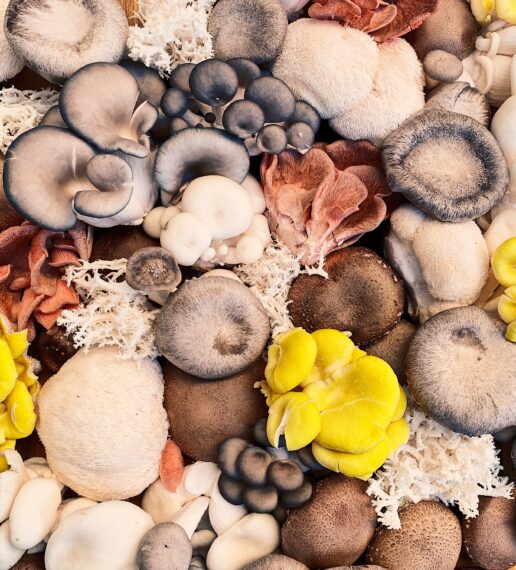How To Find Wild Lion’s Mane (Hericium species)
Lion’s Mane are an easy to identify gourmet and medicinal species that you need to add to your wild foraging repertoire.
Typically “Lion’s Mane” refers to Hericium erinaceus, which is the variety that is cultivated for both culinary and medicinal species.
But there are two other closely related hericium species that you are much more likely to find when tromping around in the woods – Hericium coralloides and Hericium americanum.
Bears Head Tooth (Hericium americanum)
This one is very closely related to true Lion’s Mane – and in fact, many wild mushroom hunters consider them the same species.
The major difference is that instead of having single “snowball-like” formations, Bears Head Tooth has a number of short branches that are closely bunched together.
You can find this mushroom growing on dead logs in the late summer and fall.
It can also be found in the wounds of dying or dead trees. Hericium americanum grows most commonly on hardwoods, although it will sometimes grow on conifers.

Bears Head Tooth is a delicious edible mushroom, although because of its shape and how it grows, it can often be dirty and difficult to clean.
That being said, if you find one that is covered in dirt, you can simply wash it under cold water to clean off the debris before cooking it up.
Some say the flavor is slightly fishy, but in my experience with any hericium species it really tends to just take on the flavor of whatever it is cooked in.
Coral Tooth Fungus (Hericium coralloides)
Although still in the Hericium genus, this one does look substantially different from both Bears Head Tooth and true Lion’s Mane.
Instead of the teeth growing from a central point, H. corraloides grows an extensive number of irregularly shaped branches of various lengths.
The spines that emanate from the branches are however long and slender, and extend downwards towards the ground.

Hericium corraloides is more common than any other Hericium species in my experience – so it is a good one to know.
Also, if you find one fruiting there is a really good chance that you will find a bunch more, so be sure to look around! I will often find multiple logs fruiting this mushroom within close proximity.
Lion’s Mane Lookalikes?
Hericium species are easy to identify by their white cascading spines, their affection for growing on hardwood logs, and the way they grow in a single clump.
It may be hard to tell the difference between different species of Hericium, especially when young, but they are all considered good edibles with no real look-a-likes.
There are however some inedible mushrooms that could superficially look like Lion’s Mane, so it’s best to avoid them if you are not 100% sure.
As with any wild mushroom, it’s always best to go with an expert or consult your local mycological society for proper identification.
Cooking Lion’s Mane
Lion’s Mane (Hericium erinaceus) is an AMAZINGLY delicious mushroom, and its close cousins are no different. If you can find a wild specimen that is in relatively good shape, simply clean it under cold water, slice up and fry in a pan.
Some say that these mushrooms have a seafood flavor, but in general they just kind of take on the flavor of whatever they are cooked in.
The texture is meaty, and not that dissimilar to lobster.



Very insightful
Thanks! The initial pic drew me in as potentially misleading since it said lion’s mane and showed a picture of hericium coralloides. Thanks for promoting mycology, friend.